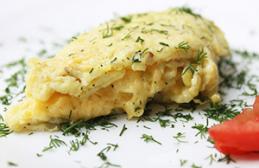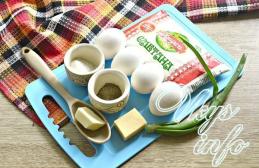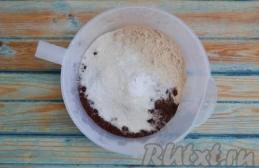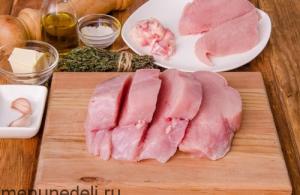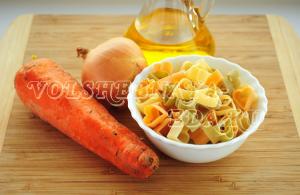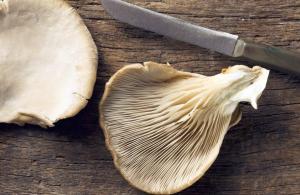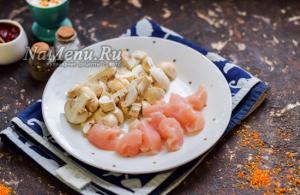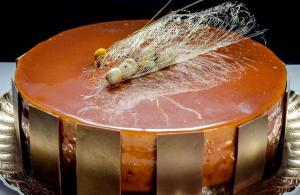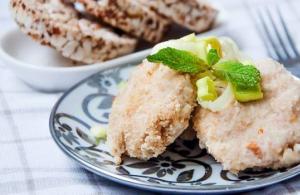Let's get acquainted with the wonderful old recipes for vodkas and liqueurs, because many of them can be used in our time, surprising guests with the unusual tastes of holiday drinks.
Ivovka
8 glasses of quince juice, 8 glasses of vodka, a bunch of rye straw, 50 g each of sugar and vanilla sugar.
Chop a bunch of straw very finely and grate the overripe quince. Squeeze the juice out of this mixture. Mix the resulting juice with vodka. Add regular and vanilla sugar. Pour into a bottle and leave for a week. Filter.
Anisette vodka

Take 65 g of anise and 30 g of fennel, mix and grind, then take two-thirds of the resulting mixture, pour in 2 liters of vodka and 400 g of water, distill, preventing the whitish alcohol from getting into the resulting vodka. Put the remaining spices, leave for several days, sweeten with sugar dissolved in cold water (600 g per 3 l), filter.
Orange tincture

2 liters of vodka, 1 liter of water, sugar, peels of 4-5 oranges.
Boil syrup from refined sugar and 1 liter of water. Mix with vodka. Pour into a bottle and add orange peels. Place in the shade for 3-4 days. Filter and bottle.
Lingonberry-cherry liqueur

150 g cognac, 2 l vodka, 3.5 kg lingonberries, 600 g cherries, 2.5 l sugar syrup, citric acid.
Place all ingredients in a glass container, close tightly and leave. Filter the finished tincture and bottle it.
Clove vodka

For 1/4 bucket of alcohol, 4 cups of water, 6 spools of cloves, one spool of white cinnamon, 1/2 spool of lemon zest, 650 g of sugar.
(1 spool = 4.266 grams)
Wash the cloves and cinnamon thoroughly, dry, crush coarsely, and add to alcohol. After 2-3 weeks, clean the tincture and strain it.
"Erofeich"

Put 410 g of English mint, 410 g of anise, 410 g of coarsely crushed hazelnuts on a bucket of purified vodka, put all this in a large bottle for 12 days in a warm place. After this, you can consume it, draining the grounds or without draining, as you wish; You can again pour half a portion of vodka onto the grounds and put it in a warm place for a month.
Casserole

1 liter of homemade vodka, 10 g ginger, 10 g hot pepper, 5 g cloves, 5 g cinnamon, 10 g lemon zest, 5 g nutmeg, 5 g cardamom.
Mix all the ingredients in a saucepan, cover with a lid, which is tightly tied to the ears of the saucepan, coat with unleavened dough so that air does not pass through, put some weight on top and put in the oven or hot oven for 12 hours. After this, cool the pan, pour the casserole into bottles and seal with stoppers.
Needle

1 liter of vodka, 1 glass of pine cones, 80 g of caramel or sugar.
Pour vodka over young pine cones, immature, soft, green in color and leave for 2 weeks. Drain the infusion and squeeze out. Sweeten with sugar or caramel (burnt sugar).
Cranberry tincture

0.5 liters of vodka, a glass of cranberries, sugar to taste.
Crush the cranberries, mix with sugar, add vodka and keep in a sealed container for a week. Then squeeze the cranberry skins through cheesecloth.
Cinnamon vodka

Grind 32 g of cinnamon very finely, put it in a cube and pour in 2 liters of vodka and a small amount of water. Distill over moderate heat until all the flavor is released. Sweeten with sugar dissolved in cold water - 600 g per 2 liters of water.
Coffee vodka

Boil 1.5 kg of sugar in water, skimming off the foam. Pour 400 g of roasted ground coffee into this syrup and let it sour. Distill, add another 200 g of coffee and let stand in a tightly sealed container for several days. Distill. Vodka is made from chocolate in the same way.
Gooseberry tincture

1 liter of vodka, 1 liter of boiled water, 1 kg of gooseberries, sugar.
Pour vodka and boiled water over the gooseberries. Keep, stirring, in the sun for 2 weeks until the gooseberries float to the surface. Strain and add sugar to taste. Leave it in the sun again, then put it in the refrigerator for 10 days. Strain again, bottle and store in a cool place. Use after 3 weeks.
Lemon vodka

1 bottle of vodka, 2 medium-sized lemons.
Cut off all the yellow skin, trying to do it as thinly as possible, since the slightest presence of white skin gives the vodka an unpleasant, bitter taste. Leave for several days in a warm place, then filter the vodka in the usual way.
Lemon vodka (option 2)

Take one lemon and a piece of sugar, grate the lemon peel. Scrape the yellowed sugar onto a plate. In this way, remove all the peel from the lemon. Add yellow sugar to vodka to taste.
Raspberry vodka

Pour mature, sorted raspberries with well-purified alcohol so that the berries are barely covered, and place in the sun. After 2-3 days, drain the alcohol.
For 4.1 liters of alcohol, take 3 glasses of water and 600 g of sugar. Boil water with sugar three times, skimming each time, and pour the raspberry-infused alcohol into the hot syrup (just enough for your finger to tolerate), little by little, stirring with a spoon.
Strain through flannel, on which you first place cotton wool, then coals, then another layer of flannel. Carefully seal the bottles of vodka and place in a warm place.
If you need to clarify vodka, then take 10-15 g of potassium permanganate for a quarter of a bucket of vodka (4.1 liters), dissolve it in a small amount of water and pour into the vodka, stirring quickly. The vodka will clear within 2-3 days; all that remains is to carefully drain and strain.
Lightly salted vodka

In the ridge where cucumbers grow, place a bottle or jar so that the cucumber will continue to grow inside that container. To do this, the ovary must be carefully pushed into the neck of the bottle or jar. When the cucumber grows, pinch it off the stem and pour good strong moonshine over it. The taste of vodka is the taste of lightly salted cucumber. If you pour store-bought vodka, you get the taste of a fresh cucumber.
Tangerine vodka

1 bottle of vodka, 2 medium-sized tangerines
Peel the tangerines and put them in vodka. Infuse in a warm place, then filter in the usual way.
Tangerine tincture

0.75 l of vodka, 6 tablespoons of dried tangerine peel. Grind the peel, add vodka and leave for a week. Refrigerate before use.
Juniper vodka

Crush 600 g of juniper berries as finely as possible and pour in 6 liters of vodka. Leave for several days, distill over very low heat. The first 2.5 liters of vodka will be the best.
Juniper vodka (option 2)

Dissolve 1.6 liters of juniper berries in alcohol and mix with 12.3 liters of vodka.
Muscat vodka

17 g nutmeg, 2 liters of vodka.
Place the nuts in the vodka, seal tightly, and leave for a while.
Mint vodka

800 g of mint, a handful of salt and 1.2 kg of honey pour 12.3 liters of vodka.
Leave for 2-3 days and distill.
Autumn tincture

500 g of rowan, 1 kg of fragrant ripe apples (ranet), 300 g of sugar, 1.5 liters of vodka.
Rowan berries collected after frost should be thoroughly washed and dried. Cut the apples into rings, after removing the core. Place rowan berries and apples in layers, sprinkling each with sugar, and pour in vodka so that the fruits are completely covered. Cover with gauze and leave to stand at room temperature for 2-3 months until the berries discolor. Filter the tincture, bottle it and store it in a dark and cool place.
Aspen tincture

Pour 300 g of aspen buds into 1 liter of vodka.
In a week the tincture will be ready. When using, add 1 tablespoon of honey.
Hunting tincture

30-40 g juniper berries, 2 g ground black pepper, 50 g dill seeds, 10-12 g table salt, 40 g horseradish.
Pour all ingredients into 1 liter of strong vodka. Leave for 2 weeks in a warm place, shaking the contents occasionally. Then strain and filter.
Foam vodka

Infuse 1 liter of vodka on a handful of juniper berries for two weeks, then on the peels of two lemons for 5 days. Mix a spoonful of crushed ginger with sugar and dilute it in infused vodka. Keep in the sun for two weeks. Strain, pour, store refrigerated. Drink in six months.
Pepper vodka

Infuse 0.7 liters of vodka with 25.6 g of black pepper beans for 2 weeks.
Pepper tincture

Infuse 2 liters of vodka with 70 g of pepper for 2 weeks, strain and dilute with weak syrup (200-300 g of sugar, 3-4 glasses of water). Leave in a warm place for several weeks, then carefully strain and bottle.
Wormwood double vodka

Pour 300 g of wormwood tops into 12 liters of plain vodka, add a handful of salt and leave for a week. After this, add 1.2 kg of honey and distill.
Wormwood tincture

Fill a 0.25-capacity bottle with fresh wormwood, add vodka and leave for 2-3 weeks. If the tincture is prepared from dried herbs, take 100 g per 1.5 liter. You can add lemon zest for flavor.
Festive vodka

For 1 liter of homemade vodka, take 1 teaspoon of soda and 1 teaspoon of citric acid, stir well.
Fisherman's tincture

For 1 liter of purified vodka 40-42%, take 3-4 cloves of garlic, finely chop and add 1.5-2 g of ground pepper, 10 g of table salt, 4-5 g of crushed bay leaves and 30 g of sugar. Leave for 4-5 days, shaking the contents daily. Then filter through a cloth filter.
Rowan vodka

Grind the ripe rowan berries in a mortar, put them in a tub until half full, add hot water, wrap the tub and tie it tightly so that the spirit does not escape, and keep it this way for twelve days, and when the rowan sours and the top of the tub becomes covered with thick stuff, like wine mash, then take the mass from the tub with the grounds and distill it through the cube like mash, and in the fourth distillation you will have very good vodka.
French liqueur

Take a mixture of the following fragrant herbs: cardamom, galangal, ginger, cloves, cinnamon, anise at the rate of 43 g per quarter bottle of vodka.
Tea vodka

1 liter of vodka, 4 tablespoons of tea, 50-70 g of caramel.
Infuse black long tea in vodka for 3 hours, strain. Then fry the sugar in a frying pan until caramel forms, chop, add to vodka.
Rosehip vodka

Boil 800 g of rose hips in honey for an hour, strain through a sieve. Pour in 12.3 liters of 40% alcohol. Let it sit and bottle it. This vodka is extremely aromatic and tasty.
Elixir vodka

100 g cinnamon, 30 g each cloves, dill seeds, anise, cumin, 20 g each lavender and rosemary flowers, 800 g each lemon and orange peel, 2 handfuls each of thyme, oregano, mint, sage, 15 g galangal, 12 g each ginger, nutmeg, nutmeg flowers, 8 g cardamom, 12 g each angelica, calamus root, 4 g saffron.
Crush all the spices, pour in 12.3 vodka, leave for a week, distill and sweeten to taste.
I must admit that now even the word “vodka” itself in the plural causes bewilderment. The difference between what is now sold in bottles, albeit under different names, is most often only in the price, and in the number of unpleasant-looking stains that appear on the surface of the liquid poured into a glass. And, meanwhile, today's vodka has very little in common with what has long been called vodka in Rus' and has deservedly received worldwide fame. In addition to the fact that many varieties of vodka were sold, which were actually and significantly different from each other, in a decent house it was considered bad manners to put a store-bought bottle on the table.
A real housewife always tried to give the treat a unique originality with her own hands. We think it would be nice to revive this tradition. In addition, vodka prepared at home has a taste and smell incomparable to store-bought; poured into a decanter and passed through the skillful hands of the owner
It evokes in those sitting at the table a completely different attitude than an ordinary faceless bottle; it already seems like a sin to drink in glasses to the point of insanity.
But, before we give several recipes for homemade vodka, we will tell you how you can clean ordinary vodka or drinking alcohol from the unpleasant odors that they often have. This is not difficult to do, especially if you have a summer house or garden plot.
Take a few dry birch logs and build a fire from them. When the coals reach the highest temperature and have already crumbled, scoop them into a clay pot, blow off all the ash as cleanly as possible and tightly close the pot with a lid so that the coals go out. Then remove them from the pot, blow them again, cool and grind, but not too finely.
Place the crushed coals in a bottle at the rate of approximately 50 g per 1 liter and fill with vodka or alcohol. Shake the bottle 3-4 times every day for the next three weeks. Then let the vodka sit for another week, but do not shake it. After this, filter the vodka, pour into a clean bottle, put in it very carefully sorted and as large as possible raisins (30-40 g per 1 liter) and 3-4 g of orris root, finely cut into pieces. Let it sit for another 12 days and filter again. The finished drink must be completely free of foreign odors and tastes. Just keep in mind that if you infuse alcohol and then dilute it, be sure to use boiled cold water, otherwise the mixture will become cloudy and turn white.
Next, you can optionally give the vodka a color that is most pleasing to you. The list of flowers and their corresponding plants is very simple: blue vodka is infused with cornflowers, yellow with saffron, green with mint, red with blueberries, purple with sunflower seeds, brown with pine nut shells.
You can vary the density and richness of the shade to your own taste depending on the number of plants and infusion time.
To prepare vodka according to the following recipes, you should use the direct distillation apparatus described above and shown in Figure 2. It only remains to add that we present complete recipes compiled back in the days when with spices and herbs, as well as with other products, there were no current difficulties. But nothing bad will happen if you can’t get one or two ingredients for a recipe. The main thing is to maintain the principle; the drink will still turn out much better than usual.
White Moscow vintage vodka
40 g ginger, 40 g galangal, 40 g sage, 40 g mint, 40 g anise, pour 1 liter of alcohol and leave for 18 days. Then add 1.5 liters of cold raw water to the infusion (if you have spring water on your property, it’s best) and distill it all together through a distillation apparatus. If you used vodka instead of alcohol, you can not dilute it with water or dilute it quite a bit.
Vintage vodka Erofeich
35 g of mint, 35 g of anise, 35 g of coarsely crushed orange nuts, pour 1 liter of vodka purified on birch coals and leave in a warm place for 12 days. After this, the vodka can be consumed without draining the grounds, but, in principle, the grounds can be used again by pouring half a portion of vodka and leaving it in a warm place for a month.
Vodka with almond flavor
Take the youngest shoots of the rowan tree, peel them and cut the white stems into pieces as small as possible. Pour these pieces with the simplest wine, preferably strong white, in a volume ratio of 1:4 (1 part shoots and 4 parts wine) and distill through a distillation apparatus. If the almond smell seems weak to you, add more shoots to your taste and distill again.
Early ripening caraway vodka
Pour 350-400 g of cumin into 1 liter of water and distill through a distillation apparatus. The resulting cumin water can be stored at low temperatures in the refrigerator or on an icebox in the cellar for several months. When you need cumin vodka, sweeten the water just a little, pour it into the vodka to taste, and the drink is ready.
Vodka casserole
In the simplest vodka, put from 1/10 to 1/5 of the volume of dry lemon peels, let it sit for at least a few hours and distill everything together through a distillation apparatus. Take a bottle made of the thickest glass possible and add 6 g of cinnamon, 1 g of cardamom, nutmeg, all previously finely crushed, to 1 liter of distilled vodka. Seal the bottle and coat it with steep rye dough three fingers thick. If you are preparing a drink in the country and you have a stove, then as soon as it starts to cool, put the bottle in it overnight. In the morning, take it out and leave it in the room. Repeat this for 4 days in a row. If there is no oven, then use a cooling oven, but then you need to put the bottle in it at least 8 times. After cooking, filter the vodka and you can sweeten it slightly, but put no more than 250 g of sugar per 1 liter of vodka.
Rowan foam
Take about a kilogram of mature rowan, but ensure that it is collected before frost, and crush it with a wooden pestle in a mortar. Transfer to a bottle, pour in 10-12 liters of fresh bread kvass and add 50-70 g of yeast. Leave the kvass to ferment in a room at a temperature of approximately 16 C. When fermentation is almost complete, which you will determine by the cessation of active gas evolution, pour the entire mass together with rowan berries, stirring, into the flask of a distillation unit and distill several times, achieving such a state of the drink that it had no foreign unpleasant odors.
All of the described vodkas can be stored in well-sealed bottles for almost an unlimited time without losing taste and aroma, and even vice versa, acquiring a special nobility over the years.
I must admit that now even the word “vodka” itself in the plural causes bewilderment. The difference between what is now sold in bottles, albeit under different names, is most often only in the price and the number of unpleasant-looking stains that appear on the surface of the liquid poured into a glass.
Meanwhile, today's vodka has very little in common with what has long been called vodka in Rus' and has deservedly received worldwide fame. In addition to the fact that many varieties of vodka were sold, significantly different from each other, in a decent house it was considered bad manners to put a store-bought bottle on the table. A real housewife always tried to give the treat a unique originality with her own hands. Vodka prepared at home has a taste and smell incomparable to store-bought.
But before we give several recipes for homemade vodka, we’ll tell you how you can clean ordinary vodka from unpleasant odors and impurities. This is not difficult to do, especially if you have a summer house or garden plot.
Take a few dry birch logs and build a fire from them. When the coals reach the highest temperature and are already crumbling, put them in a clay pot with a scoop, blow off all the ash and close the lid tightly to extinguish. Remove from the pot, blow again, cool and grind, but not too finely. Place in a bottle at the rate of 50 g per 1 liter and fill with vodka or alcohol. Shake the bottle 3-4 times every day for 3 weeks. Then let the vodka sit for another week. After this, filter, pour into a clean bottle, put in it carefully sorted and as large as possible raisins 30-40 g per 1 liter and 3-4 g of orris root, finely chopped. Let the vodka sit for 12 days and filter. If you infuse alcohol and then dilute it, be sure to use boiled water, otherwise the mixture will become cloudy and turn white.
List of flowers and their corresponding plants:
- blue vodka is infused with cornflowers;
- yellow - on saffron;
- green - mint;
- red - on blueberries;
- purple - on sunflower seeds;
- brown - on the shell of pine nuts.
The saturation of the shade can be obtained depending on the number of plants and infusion time.
White Moscow vintage vodka
40 g ginger, 40 g galangal, 40 g sage, 40 g mint, 40 g anise, pour 1 liter of alcohol and leave for 18 days. Then add 1.5 liters of raw water, preferably spring water, to the infusion, and distill it all together through a distillation apparatus. If you use vodka instead of alcohol, you don’t have to dilute it with water or dilute it quite a bit.
Vintage vodka "Erofeich"
35 g of mint, 35 g of anise, 35 g of coarsely crushed orange nuts, pour 1 liter of vodka purified on birch coals and leave in a warm place for 12 days. After this, the vodka can be consumed without draining the grounds. But the grounds can be used again by filling it with half a portion of vodka and placing it in a warm place for a month.
Vodka with almond flavor
Take the youngest shoots of the rowan tree, peel and cut the white stems as small as possible. Fill them with the simplest wine, but preferably white and strong, in a ratio of 1:4 (1 part shoots and 4 wines) and distill through a distillation apparatus. If you find the almond scent weak, add the shoots and distill again.
Early ripening caraway vodka
Pour 350 g of cumin into 1 liter of water and distill through a distillation apparatus. The resulting cumin water can be stored in the refrigerator for several months. When you need cumin vodka, sweeten the water just a little, pour it into the vodka to taste, and the drink is ready.
Vodka casserole
In the simplest vodka, put from 1/10 to 1/5 of the volume of dry lemon peels, let it sit for a while (several hours) and distill everything together through a distillation apparatus. Take a thick glass bottle and add 6 g of cinnamon, 1 g of cardamom, finely crushed nutmeg to 1 liter of distilled vodka. Seal the bottle and coat with steep rye dough 3 fingers thick.
If you are preparing a drink in the country and you have a stove, then as soon as it starts to cool down, put the bottle in it overnight until the morning. Repeat this 4 times. If you don’t have an oven, then use a cooling oven, but then you need to put the bottle in it at least 8 times. After cooking, filter the vodka, you can sweeten it slightly, but not more than 250 g of sugar per 1 liter of vodka.
Rowan foam
Take about 1 kg of mature rowan, collected before frost, and crush in a mortar. Transfer to a bottle, pour in 10-12 liters of fresh bread kvass and add 50-70 g of yeast. Leave the kvass to ferment at a temperature of 16 degrees. When the fermentation is almost over, which you can determine by the cessation of active gas evolution, pour the entire mass along with the mountain ash, stirring, into the flask of a distillation unit and distill several times, achieving a state of the drink in which it does not have any foreign odor.
All of the described vodkas can be stored in well-sealed bottles for an almost unlimited time without losing taste and aroma, and even acquiring a special nobility over the years.
Without a doubt, “Erofeich” can be attributed to the original Russian an alcoholic drink, the recipe of which was created during the reign of Catherine II. This drink is often called Count Orlov's tincture, recipe the preparations of which have survived to this day. The classic “Erofeich” was prepared through a complex procedure for distilling bread wine and had a strength of about 80 degrees. After distillation, the resulting product was necessarily infused with various herbs and roots, due to which the drink had medicinal properties, a rich aroma and an original taste.
Today everyone can prepare this traditional old Russian product using time-tested classic recipes.
Some features of the ancient drink
 Thanks to its healing properties and unique taste, in the 19th century “Erofeich” enjoyed enormous popularity on the Russian alcohol market and was a worthy competitor to foreign wines.
Thanks to its healing properties and unique taste, in the 19th century “Erofeich” enjoyed enormous popularity on the Russian alcohol market and was a worthy competitor to foreign wines.
There are several classic recipes "Erofeich", which can differ significantly in the composition and infusion time of the drink. The classic composition of the tincture includes about three dozen different herbs and moonshine with a strength of at least 60 degrees. A distinctive feature of “Erofeich” is the complete absence of sugar in its composition, however, there are recipes that include sweet ingredients: honey, raisins or dried fruits. Depending on what herbs and roots were used to make the tincture, its color can vary, from light brown to coffee.
If you are starting to prepare this drink for the first time, it is better to start with simple recipes that include no more than 10 ingredients. By strictly following the recipe, you can prepare a wonderful drink that will benefit your body and restore peace of mind.
Cooking with moonshine
If we consider the classic options for creating tinctures "Erofeich", recipes for moonshine, without a doubt, are the oldest and are especially popular among connoisseurs of this drink.
To create the simplest and most common option"Erofeich", you will need:

All ingredients are placed in a glass jar or bottle and filled with moonshine, after which the container must be put in a warm place and allowed to brew for half a month. You must remember to stir the tincture from time to time. After infusion, the drink is filtered and stored in a cool, dark place, where it can be stored for a long time without loss of taste.
The classic recipe for “Erofeich” does not involve the use of granulated sugar, but if you want to sweeten the bitters, you can add a little natural honey to it. It is not recommended to use vodka to prepare the product according to this recipe, since it does not have sufficient strength, which, in turn, will not allow all the taste and healing properties of the drink to be revealed.
Another traditional recipe for “Erofeich” is more complex and will require the following products:
- 1 liter of moonshine;
- about 8 grams of chopped galangal root;
- approximately 3 grams of sage leaves;
- 2 anise blossoms;
- 3 grams of dill;
- 2 grams of St. John's wort;
- 2 grams of lemon balm leaves;
- About 3 grams of crushed licorice roots.
These products must be placed in a glass container and filled with alcohol. The drink prepared according to this recipe must be infused for at least 20 days. After filtering, the tincture is bottled and stored in a cool place.
“Erofeich”, made according to this recipe, has a delightful herbal aroma and has a deep cognac color.
The tincture will acquire a very original citrus aroma and slight pungency if you add ginger root to its composition. To prepare “Erofeich” with ginger you will need:

These components are placed in a jar, filled with alcohol and infused for 15 days. After filtration, the resulting tincture is mixed with moonshine with a strength of no more than 50 degrees. It is better to carry out the mixing procedure gradually, constantly tasting the drink until it acquires the taste you need.
Infusion with vodka
If you are not involved in moonshine brewing, you can use recipes for making “Erofeich”, which use vodka as an alcohol-containing base. Legendary tincture Count Orlov, grandma's recipe which is passed down from generation to generation, was made specifically on a vodka basis.
For one of the most antique recipes for “Erofeich” with vodka you will need:

The ingredients are placed in a large glass container and infused for about 20 days, while the tincture must be stirred daily.
A drink prepared according to this recipe will help cope with colds and lift your spirits.
Can be cooked vodka "Erofeich", recipe which was mentioned by Alexander Sergeevich Pushkin in the work “The Young Lady-Peasant Woman”. For this you will need:
- 1 liter of good vodka;
- 15 grams of peppermint;
- 10 grams of anise seeds;
- 30 grams of chopped orange nuts.
You need to mix vodka with the rest of the ingredients and leave for 15 days, stirring occasionally. Despite the simplicity of the recipe, this drink has excellent taste and has healing properties.
It is very important to remember that “Erofeich” insists on medicinal herbs and excessive consumption of this drink can adversely affect health.
Attention, TODAY only!
Tinctures are prepared from various herbs, leaves, flowers, roots and other components. Homemade liqueurs come in sweet, bitter, dessert, and semi-sweet varieties. As a rule, tinctures are prepared with vodka.
Depending on the selected raw materials, tinctures have different colors. To properly prepare the tincture, you need to know some tricks.
“And I was there, drinking honey and beer...”
This is how Slavic folk tales end. According to legend, it was not they who invented alcohol and vodka... the fiery intoxicating drink supposedly came from the east. But the honey referred to in the saying is an original Russian drink from the time of princely feasts. It is based on truly natural honey, strawberries and cherries, and prunes. The famous drink was obtained by fermentation (for which hops and barley or rye bread were used) and infusion for two weeks. Well, the familiar names “Medovukha”, “Khrenovukha”, “Peppers” speak for themselves.
For example, Make “Hrenovukha” very simple. Pass the horseradish root through a meat grinder. 3 tbsp. spoons of this mass pour 0.5 liters of vodka, add 3 tbsp. spoons of honey. Leave for 3 days in a dark place, shaking occasionally. Drain the liquid, leaving the sediment, and store the tincture in a dark place, tightly closed.
Garlic, horseradish, hot pepper in different proportions, infused with alcohol or vodka, are a medicine in the fight against excess cholesterol and have antiseptic properties. Such tinctures treat diseases of blood vessels, stomach, intestines, resist colds, improve immunity.
For a long time in Rus', alcoholic tinctures were prepared from “overseas” products, which in those days were red and black pepper, cumin, cloves, lemon, and apricot. The familiar rose hips, dill, juniper, walnuts, birch buds, oak bast, calamus and even pine cones and pine needles are infused in alcohol alone or with other components and are used in folk medicine.
Collections of medicinal herbs are also used to make alcoholic tinctures for health purposes. Dried, or less often fresh, linden flowers, chamomile, St. John's wort, calendula, motherwort, mint, valerian, golden mustache and others are poured with vodka or alcohol and infused. Note that pharmaceutical preparations are also made with food-grade alcohol.
Here recipe alcoholic tincture , which is a universal remedy for cleansing the body of toxins. Grind 200g of garlic, add alcohol (200g) and leave for 14 days in a dark place. Then strain, add 2 tbsp. spoons of honey and 30 ml of pharmaceutical alcohol tincture of propolis. Leave for 3 days. Such tincture is a medicine and is taken in doses of 1-25 drops according to a special scheme.
For cooking tinctures Vodka with a strength of 40° is used, which is infused with various herbs and roots, berries and seeds.On fresh herbs and leaves vodka is infused for 2-7 days (depending on its type), and on berries, seeds and roots- 4-6 weeks, tender berries (strawberries, raspberries, blackberries)- no more than 2 weeks.

WHAT YOU SHOULD KNOW:
It's worth understanding one thing in advance: tincture culture is an endless chain of trial and error. There are many classic recipes or simply guaranteed successful combinations, but some of them turn out to be frankly spoiled, and in other cases, on the contrary, they acquire additional taste bonuses. Everything will depend on the compatibility, set of ingredients and storage conditions of the tincture - each of these points guarantees you a lot of pitfalls and a whole universe for experimentation.
The easiest way to experiment is with drinks that are simpler in taste. In fact, you can also infuse simple alcohol - such drinks will be much easier to handle, but much less interesting. Another thing is more complex alcohols: gin, grappa, even rum, bourbon and whiskey.
You need to choose a pairing for such drinks more carefully. The main rule is that you need the main ingredient to either complement or completely kill the original taste of alcohol. For example, juniper gin (although it seems simple and transparent) is not so easy to curb - sweet berries are most often used for this: currants, raspberries and others.
To start your experiments, it is better to use well-known combinations that will become your starting point: gin with raspberries, red or black currants; cherry bourbon; plum Calvados; rum with cherry or raspberry; Scotch tape on apricots (even better than dried apricots); cognac with cherry or black cherry.

Second important question is how many berries or fruits to put in a jar. Let’s say right away: you shouldn’t feel sorry for the product: the more berries, the brighter and richer the taste of the final potion. It is also important to understand this rule: the more berries, the more juice will be released into the tincture and the more the alcohol will drop in degree, which is usually not very good - here you will have to find a balance, and better yet, on your own, according to your personal taste.

STORAGE:
To store the tincture, first of all, you need to get the right container: a not too narrow glass container with an airtight lid and always transparent - to monitor the process. Another important thing that you will definitely have to stock up on is your patience. Frequently opening the lid to “test” or “sniff” can lead to disastrous consequences.
“When I set out to prepare my first similar liqueur - then it was raspberry gin - I was so captivated that I happily showed it to all my friends, opened the jar and let them smell it. Over time, because of this, the berries that floated to the surface began to become moldy (even though the gin was 57 degrees). So remember - it is contraindicated to open it in vain. And you can fight floating berries with the help of special weights and chintz.” -VYACHESLAV LANKIN bar manager of the Delicatessen restaurant
Storing the magic jar is easier and best at normal room temperature - leave other options in the area of experimentation. But the meaning of the temperature regime in general is quite simple: increasing the temperature increases the rate of diffusion, so the tincture is prepared faster. But it’s not always true that this is best for her.
Another one important detail from the storage area- rays of light. If you leave the container in a dark closet, the tincture will turn out to be darker in color and seem to be thicker in appearance. This is a classic option. But you can go further and put it in the sun (for example, on the roof of your villa) - the color will fade, become rustier and lighter, and the tincture itself, no matter how strange it may sound, will acquire a smoky taste and smell.
You can uncork the potion after two weeks of infusion. Only after this does it make sense to at least somehow taste and smell the tincture. And only if you use juicy berries or fruits. Hard, dried ingredients or seeds and seeds will take much longer to infuse.
The easiest way to determine the degree of readiness is visually - when the color of the alcohol and berries mixes and the contents of your jar become almost 100 percent uniform, you can stop infusing. The exception is your personal experience or the seeds contained in fruits and berries, for the sake of the additional astringency of which you can continue to insist and wait a long time for the desired result.
Final stage before use- separation of fruits from alcohol. First, you need to strain everything through a fine sieve, pouring in the berries soaked in alcohol, and leave it for 20–30 minutes. The question remains whether to squeeze the berries or not. Everything here is also quite simple - you can squeeze everything except the berries, which are a mush in a shell (like currants and raspberries) - these small residues will then be impossible to strain. And everything else - the tincture is ready.
ON A NOTE:
Liqueurs infuse in bottles filled with berries up to the neck and tied with cloth (instead of corks). Periodically (every 2-3 days) the bottles are shaken.
After aging, sugar syrup or sugar is added to the liqueur to taste. Strain tinctures and liqueurs through filter paper or cotton wool, without squeezing them, and store them in dark, tightly closed bottles in a cool place.
Liqueurs They are prepared in the same way as liqueurs, but instead of the usual one they take vodka with a strength of over 50°, or alcohol, or a mixture of alcohol and 40° vodka (for 1 liter of liqueur - 3/4 vodka and 1/4 alcohol). If the liqueurs turn out cloudy, they are clarified with egg white (1 egg white per 1/2 liter of liqueur). Beat the whites until light foam and, continuing to beat, pour in the liqueur, place it in a warm place and, after the formation of white flakes, filter through cotton wool.
Do not confuse tincture with liqueur - these are two different categories of drinks. The latter are most often obtained by fermentation (or, conversely, simply mixing alcohol with fruit drink, if we talk about industrial quantities). They are also distinguished by the level of alcohol content - no more than 20%.
FOR YOUR INFORMATION:
A type of alcohol close to tinctures - bitter. It includes bitters, some liqueurs and rare vermouths.

The big book of snacks for alcoholic drinks. Master class of a good feast
Vodka tincture “Erofeich” or “VODKA EROFEYA”
Ingredients: 3 liters of vodka. 2 handfuls each of centaury, St. John's wort, medicinal capitol, polygonum, wormwood. 25 g each of thyme, sage, Alexandria leaf. 50 g each of dill seeds, anise, Bogorodskaya grass, garden dawn seeds, juniper berries, chicory, chamomile flowers and peony flowers. 100 g each of galangal roots and lemon root.
Preparation:
Cut all the plants, pour into a five-liter jar and fill with vodka. Seal the jar, place in a warm place for 1 day, then strain. Take a few drops before meals, adding to a glass of vodka. Experts say that this tincture has numerous healing properties.
Historical fact: the royal barber cured Count A.G. Orlov of a severe cold with it in 1768.
Tincture “Aromatic”
Ingredients: 50 g lemon zest, 1 nutmeg, 10 pcs. cloves, 1 liter of vodka.
Preparation:
Pour dry lemon zest, nutmeg and cloves with vodka and leave for 1 month. Strain and bottle.
Tincture “Healing”
Ingredients: 10 g anise, 10 g chamomile, 10 g dill, 1 liter of vodka.
Preparation:
Pour anise, chamomile and dill with vodka and leave for 5 weeks, then strain and bottle.
Cherry tincture
Ingredients: 1/2 liter of vodka, 1/2 kg of cherries, 2 tbsp. spoons of honey.
Preparation:
Pour vodka over cherries and honey. After 3-5 days, drain the tincture, pour into bottles and seal.
Horseradish tincture
Ingredients: 1/2 l vodka, 4 tbsp. spoons of chopped horseradish root.
Preparation:
Pour crushed horseradish root with vodka and let stand for 1-2 days. Then drain the vodka, strain, pour into a bottle and seal.
Carrot tincture
Ingredients: 1/2 liter of vodka, 1/2 cup of dried carrots.
Preparation:
Pour vodka over the dried carrots and leave for a day, strain and pour into bottles, seal tightly.
Herbal tincture
Ingredients: 1 liter of vodka, 1 teaspoon of ground pepper, 1 teaspoon of allspice, 1 teaspoon of cumin, several mint leaves, parsley, linden flowers, 5 viburnum berries, 5 juniper berries, a sprig of rue.
Preparation:
Pour all components with vodka, let stand for 5-7 days, strain and bottle.
Rowan tincture
Ingredients: 1 kg of berries, 1 liter of vodka, vanilla sugar.
Preparation:
Rinse the rowan, dry it, place it on a baking sheet lined with clean paper and dry it in the oven, making sure that the berries do not burn. Pour 1/3 of the volume into bottles with dried berries, add vodka and place in a warm place for 3 weeks. Then strain the tincture and pour into clean bottles. Add a little vanilla sugar to each.

Ryabinovka(rowanberry on cognac)
Rinse rowan berries (picked after the first frost) in cold water, remove stems and pour into bottles 2/3 of their height.
Pour cognac and leave for about 3 weeks in a dark place. Then strain the tincture and store in tightly closed bottles.
Hunter's drink
Ingredients: 1/2 liter of vodka, 5-6 juniper berries (fresh or dry), 1 tbsp. a spoonful of garlic juice, pepper and salt to taste.
Preparation:
Mix all ingredients and leave for 1 day, then strain and bottle.
Lingonberry tincture
Ingredients: 2 kg of lingonberries, 1 liter of vodka, 200 ml of cranberry juice, 200 g of sugar, 200 ml of water.
Preparation:
Pour ripe lingonberries into a bottle, add vodka and leave for 2 months in a warm place. Then strain, color with cranberry juice, mix with sugar syrup and bottle.
Rose hip tincture
Ingredients: 1 liter of vodka, 80 g of rosehip flowers, 100 g of honey.
Preparation:
Boil rosehip flowers with honey, cool, strain and add vodka. Infuse for a week.
Rose tincture
Ingredients: 100 g rose petals, 200 g sugar, 100 ml water, 1 liter vodka.
Preparation:
Boil rose petals in sugar syrup, add vodka and leave for 2-3 weeks. Strain and bottle.
Anisette
Ingredients: vodka - 2.5 l, anise - 4 g, star anise - 0.2 g, cumin - 0.3 g, coriander - 0.15 g, dill - 0.4 g
Preparation: The components are poured with vodka and kept for 2 weeks. The tincture turns out strong and bitter.
Homemade tincture of birch buds
Ingredients: vodka - half a liter, birch buds - 50 g, 1 teaspoon of honey
Preparation: the kidneys are infused in vodka for ten days, after which bee honey is added.
Lingonberry tincture (recipe-2)
Ingredients: vodka – 2 l, cognac – 150 ml, lingonberries – 4 kg, cherries – 500 g, sugar syrup – 2.5 l, citric acid.
Preparation: buds are poured into a bottle, lingonberries and cherries are poured, cognac and vodka are poured. They insist for a week. Then syrup and acid are added. This homemade liqueur recipe is sweet and sour and has a beautiful reddish-brown color.
Homemade blackberry tincture
Ingredients: alcoholized blackberry juice made from 2.5 kg of berries - 2 l, sugar syrup - 1.5 l, vanillin - 0.05 g, citric acid - 3 g, water.
Preparation: the juice is sweetened with syrup and vanillin and citric acid are added. Dilute with water to taste. The resulting drink is not very strong, but aromatic.
Tincture on barberry leaves
Ingredients: vodka – 1 l, barberry leaves – 200 g
Preparation: The leaves are crushed and filled with vodka into bottles. I keep it at room temperature for a week. After a week, the tincture is filtered and bottled. Used in small quantities for medicinal purposes.
Tincture of honey and walnut partitions
Ingredients: vodka - 1 l, honey - 2 tbsp, walnut partitions - 0.5 kg, water - 0.5 l
Preparation: The partitions are infused in vodka for 3 days, then water and honey are added.
Tincture with mint, anise and nuts
Ingredients: vodka - 2 l, mint - 40 g, anise - 40 g, nuts - 40 g.
Preparation: add herbs and nuts to the vodka and leave it in a warm place for two weeks. Then filter and consume.
Pepper tincture
Ingredients: vodka - 2 l, pepper - 70 g, sugar - 200 g, water - 3 glasses.
Preparation: Pepper is poured into vodka and kept in a warm place for 2 weeks. Then filter and add syrup. The tincture should stand for another 3-4 weeks.
Wormwood tincture
Ingredients: vodka – 0.5 l, wormwood – 2.5 g, sugar – 10 g.
Preparation: Dried wormwood is placed in vodka and kept for 2 weeks. Then filter, add sugar, previously dissolved in a small amount of water.
Homemade propolis tincture
Ingredients: vodka – 1 l, propolis – 200 g, birch sap.
Preparation: propolis is crushed and poured into a bottle, filled with vodka. Shake well and leave for 3 days, shaking occasionally. If desired, add birch sap.
Caraway tincture
Ingredients: vodka – 1 l, cumin – 800 g, sugar, water – 3 l.
Preparation: The caraway seeds are left to stand in water, vodka and sugar are added to the caraway water.
Homemade cognac - 1st option
Ingredients: 3 liters of vodka, 1 tbsp. spoon of premium tea, 3 tbsp. spoons of sugar, 5 pcs. bay leaf, 5 pcs. allspice, 5 pcs. black pepper, 1 piece of hot capsicum, 1 tbsp. a spoonful of mint or lemon balm, vanilla on the tip of a knife.
Preparation:
Mix all components, add vodka and keep in a dark place for 10 days. Then strain the drink and bottle it.
Homemade cognac - 2nd option
Ingredients: 3 liters of vodka, 2 tbsp. spoons of oak bark, a pinch of tea, 1-2 peppercorns, 2 pcs. bay leaf, a pinch of St. John's wort, lemon balm and tarragon, 2 slices of dry citrus peels, vanillin on the tip of a knife, 10-15 pcs. walnut partitions.
Preparation:
Put walnut partitions into vodka and let it brew for 3 days. Strain the infusion, add all the ingredients and keep in a dark place. Then strain the drink and bottle it.
Stages of alcoholism: Test yourself for addiction
POPULAR RECIPES:

Tincture "Hunting"
Vodka- 1 l
Juniper berries- 40 g
Ground black pepper- 2 g
Dill seeds- 50 g
Salt- 10 g
Horseradish- 40 g
Black currant gin
Gin- 750 ml
Lemon zest- 5 g
Black currant- 1 kg
Powdered sugar- 30 g
Cherry Bourbon
Bourbon- 700 ml
Cherry (possibly with a pit)- 1.2 kg
Powdered sugar- 20 g
Scotch on quince
Scotch- 750 ml
Quince- 1 kg
Sugar- 100 g
Tincture "44"
Calvados- 1 l
Coffee- 44 grains
Carnation- 44 buds
Rafinated sugar- 44 pieces
Orange- 1 PC.
2. Before putting the berries in the tincture, they should be frozen - the ice will destroy the structure, and they will release juices and other elements faster.
3. There is an opinion that the readiness of the tincture should be determined by the berries that float to the surface. In fact, this is not true. In any case, this thesis should not be used.
4. Another common opinion: harmful acids are released from the seeds of berries during the infusion process. This is true, but you should not be afraid of them - the doses are too small to cause any harm to a person.
5. Roasting caramelizes the fruit's natural sugars. This effect can be skillfully used - for example, fry pineapple slices in a frying pan, and only then add them to the tincture. This way, you won’t have to put sugar there, and the caramel will add richness to the color scheme.
First, tinctures appeared, which were prepared with alcohol, vodka, and later cognac. Then - balms, which differ from tinctures in their comparative thickness and variety of components. Tinctures and balms came to the modern world from ancient times.
Despite the fact that they are prepared on the basis of alcoholic beverages, balms and tinctures are medicinal preparations. It is impossible to say exactly which country or who exactly invented them first. But, most likely, one of the eastern countries became the birthplace of these medicinal drinks.
In Rus', tinctures appeared around the 10th century AD. e.
A certain man named Erofey tried to use an ancient oriental recipe to prepare a strong alcoholic drink. He insisted on vodka, mint, anise, and crushed nuts. He poured all the products included in the future tincture into a bottle and placed it in a warm place. The vessel stood in a warm room near the stove for more than 12 days. When Erofey decided to see what exactly he had come up with, he discovered a qualitatively new drink.
Now we can say with certainty that it was a tincture. The drink made by Erofey was widely sold among the people, and it was nicknamed in honor of the “inventor” - “Erofey vodka” or “Erofeich” vodka (recipe above)
Making cognac is a rather complex and lengthy process, the primary (initial) “material” for which is young dry wines, mainly white. The wine is distilled once and then aged in oak barrels.
In Rus', vodka has long been an integral attribute of every meal, as well as fishing, hunting, baths and all other “exciting” moments of pastime.
Galileo. Mead
An Old Slavonic drink is mead. What kind of drink is this, how and from what is it prepared?
Blue-eyed people are more persistent drinkers than brown-eyed people
The detrimental role of alcoholism on various acute and chronic diseases
primary sources of information:

